Mr. Lingo
Mr. Lingo is a gamified English learning app inspired by platforms like Duolingo — designed to make language learning an emotionally engaging, goal-driven, and habit-forming experience. From kids to adults, it transforms daily practice into an adventure through a visually rich, rewarding interface guided by a friendly mascot.
| Year | 2025 |
| Collaborators | Hamed Bahadori |
| Website | hamedbahadori.com |
Our Process

Problem Statement
Most language learners give up within the first week. Research shows that 80% of app users churn in the first 7 days, often due to boring UI, lack of feedback, or overwhelming tasks. Our mission was to design an emotionally engaging, gamified, and intuitively structured experience that keeps users coming back daily.
Research
Target Group
• Children (7–14 years) learning English for school or fun • Adult beginners learning English in short daily sessions • Busy professionals with only 10 minutes/day • Parents guiding their kids through fun learning apps
Objectives & Goals
• Build an engaging learning journey with strong visual feedback • Make users feel progress after every session • Use gamification to form daily habits
Research Methods
• Competitive analysis (Duolingo, Lingokids, Memrise) • User journey mapping for different age brackets • Behavioral research into app retention & cognitive load
User Interviews & Insights
Key Insights:
• Kids love mascots, colors, and quick wins • Adults prefer daily goals and structured progression • Both groups need positive reinforcement and minimal onboarding
Personas
Persona 2 – Zahra (Age 32)
- Learning English for career growth.
- Prefers short, daily exercises with visible progress.
- Needs consistency reminders and emotional support.
Competitor Analysis
Opportunities:
• Simplify lesson UI • Add emotional support through mascot • Build story-driven map navigation (like games)
Information Architecture & User Flow
Design System

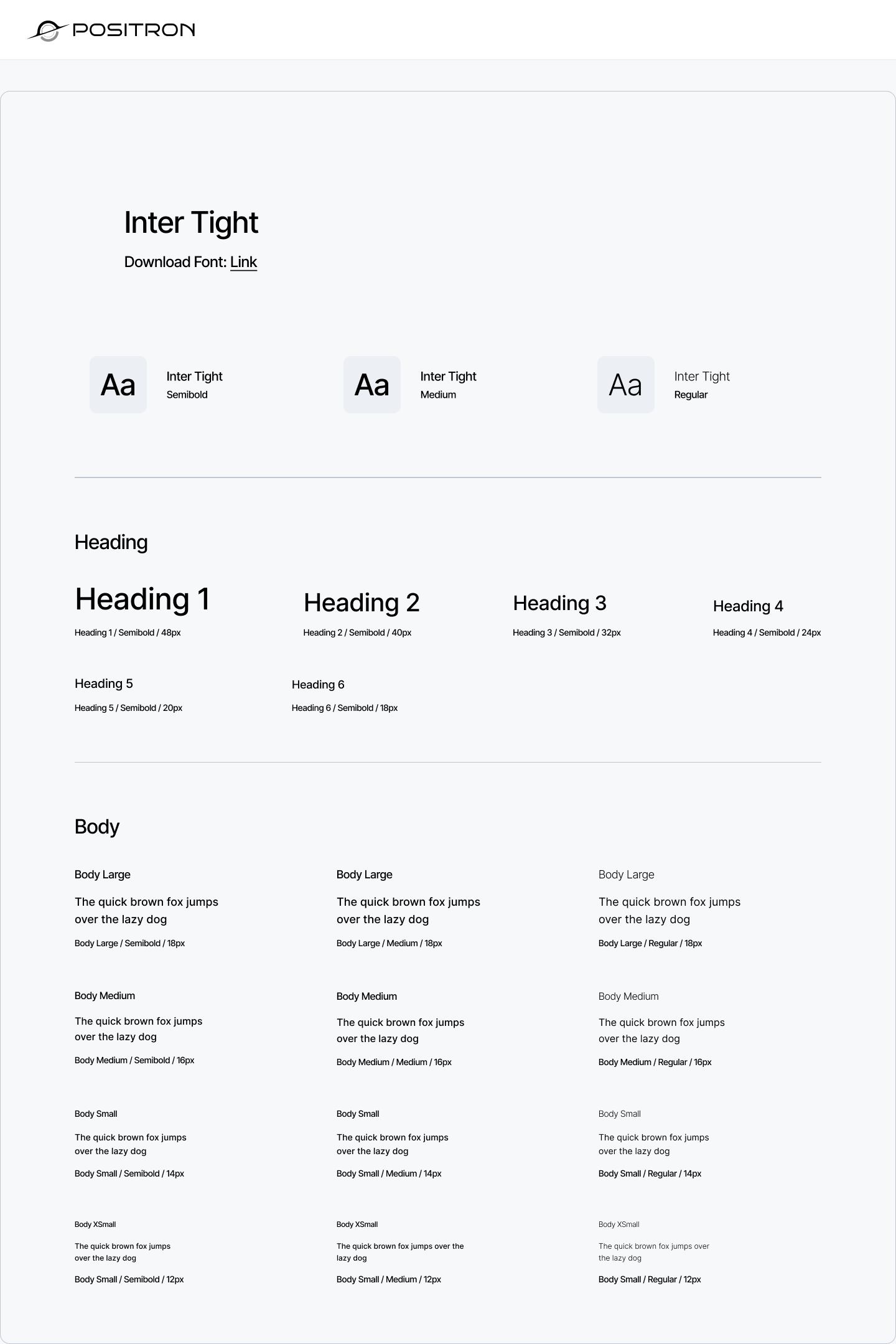
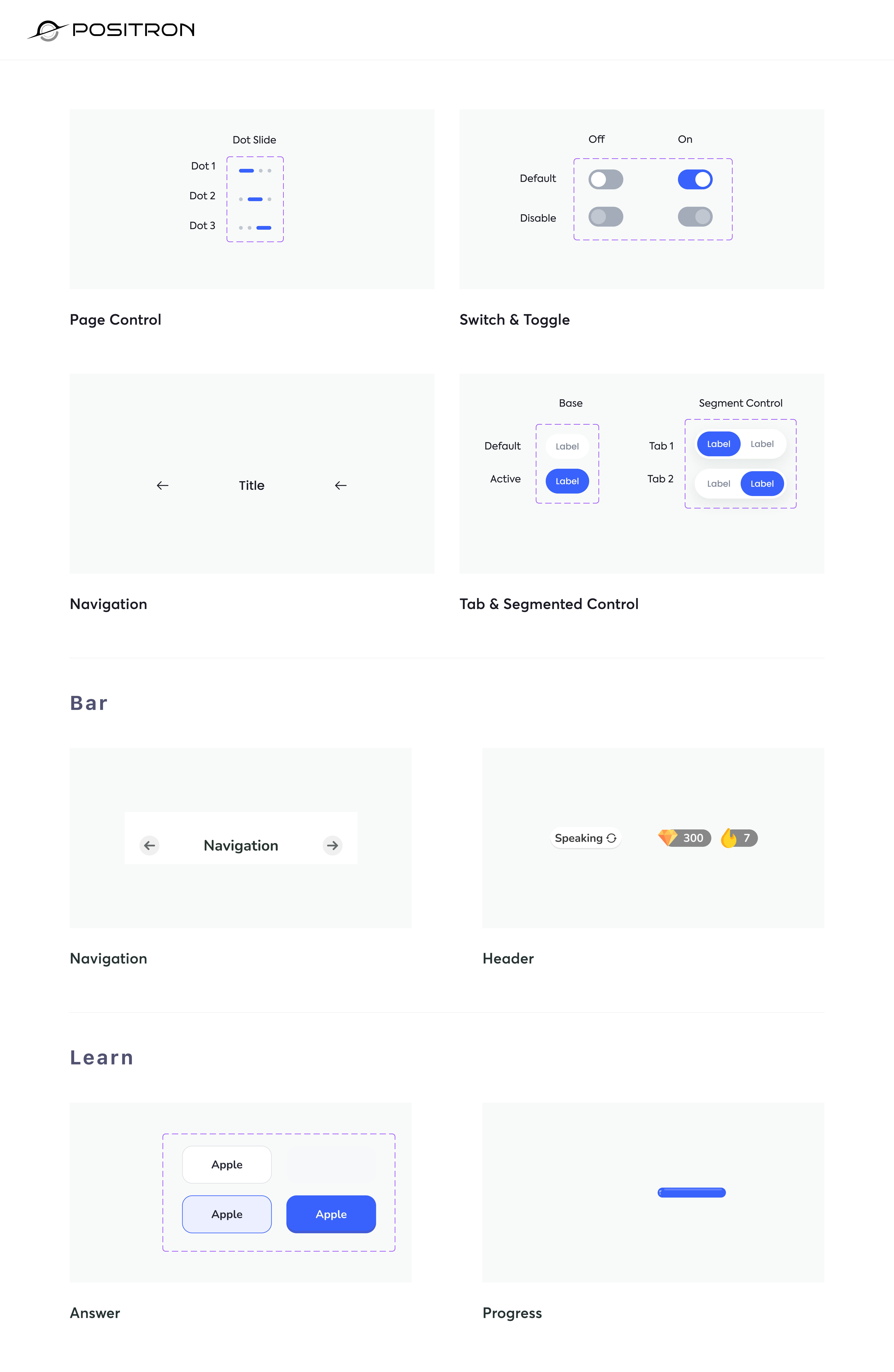
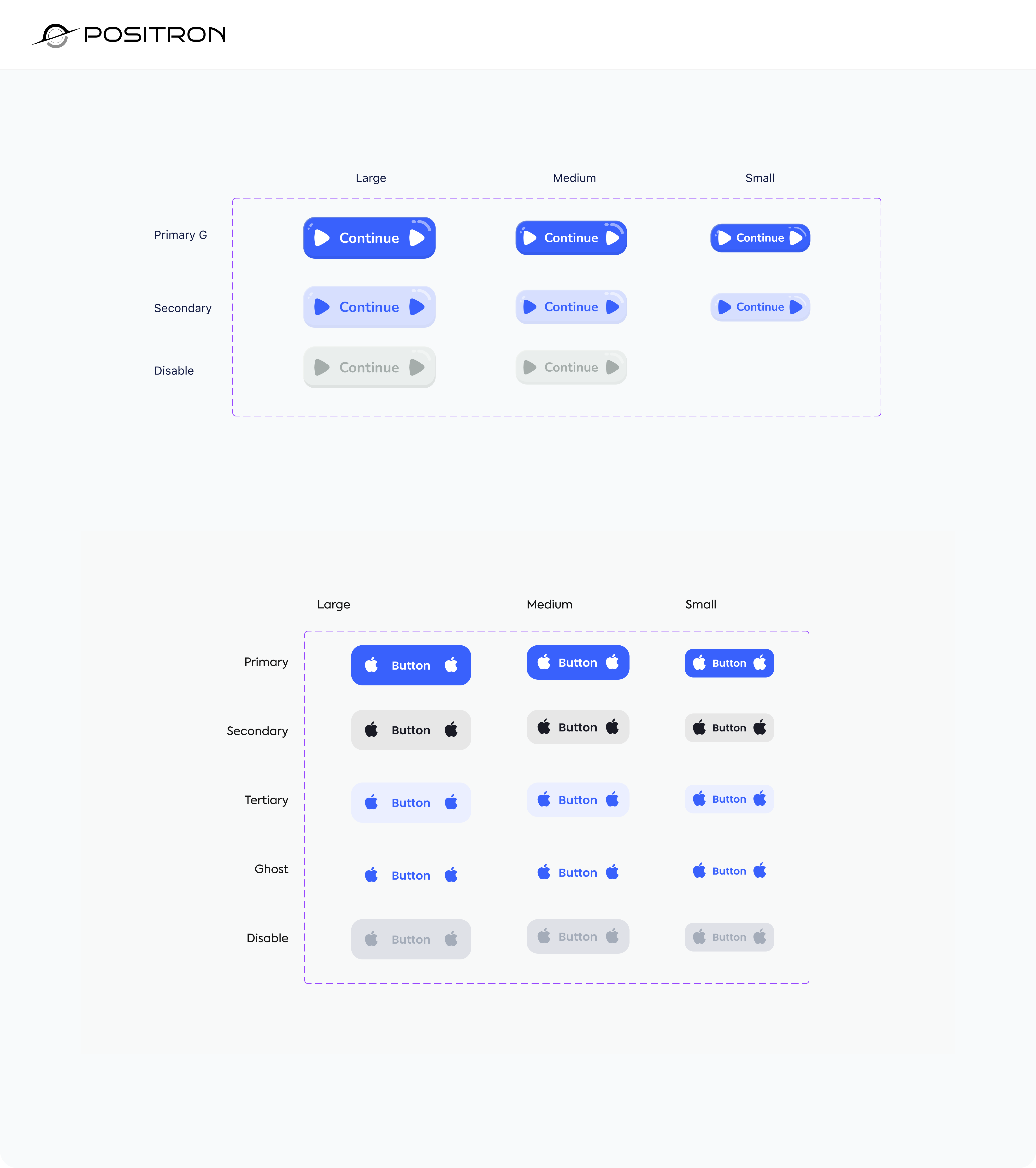
Visual Identity
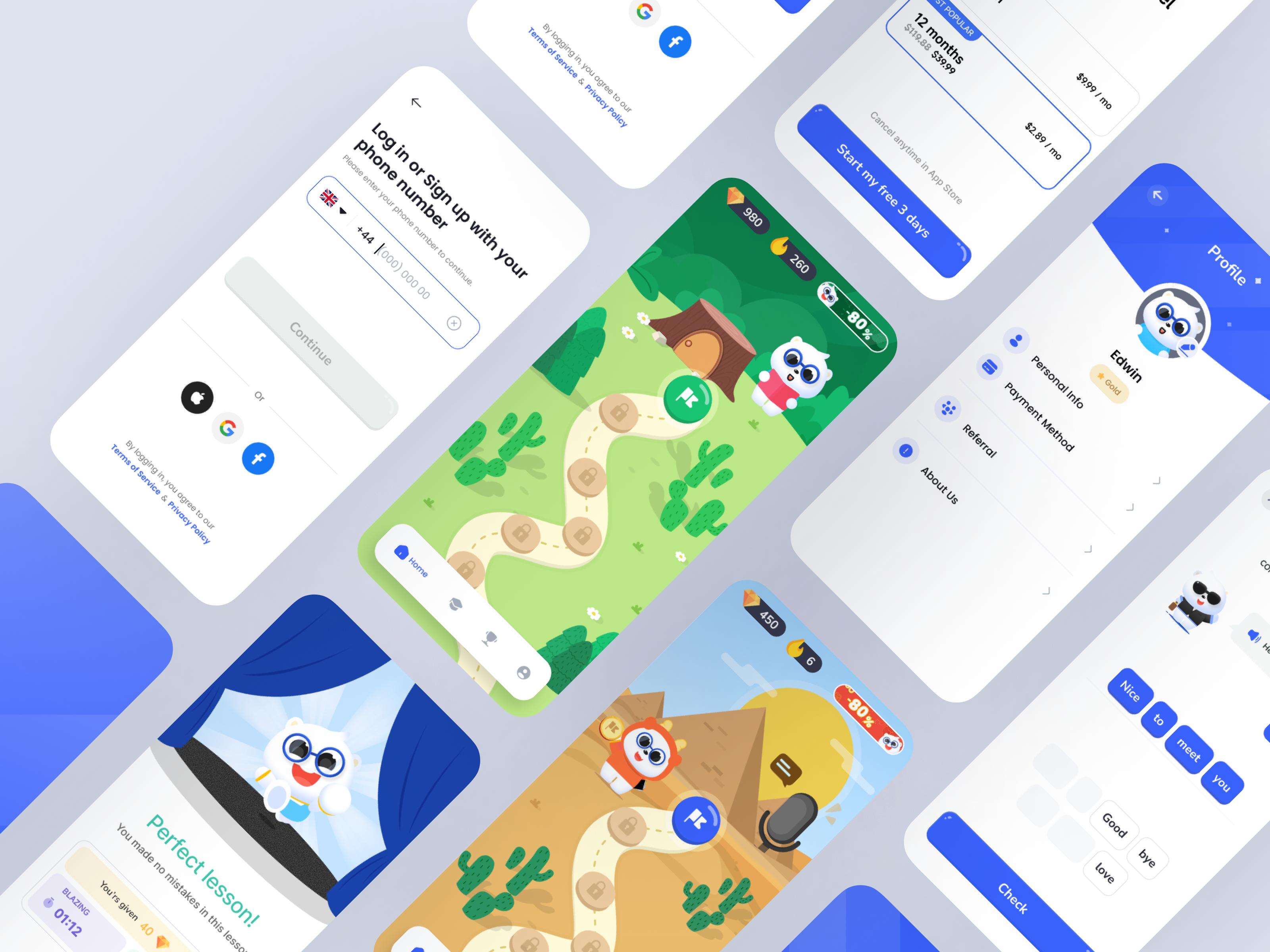
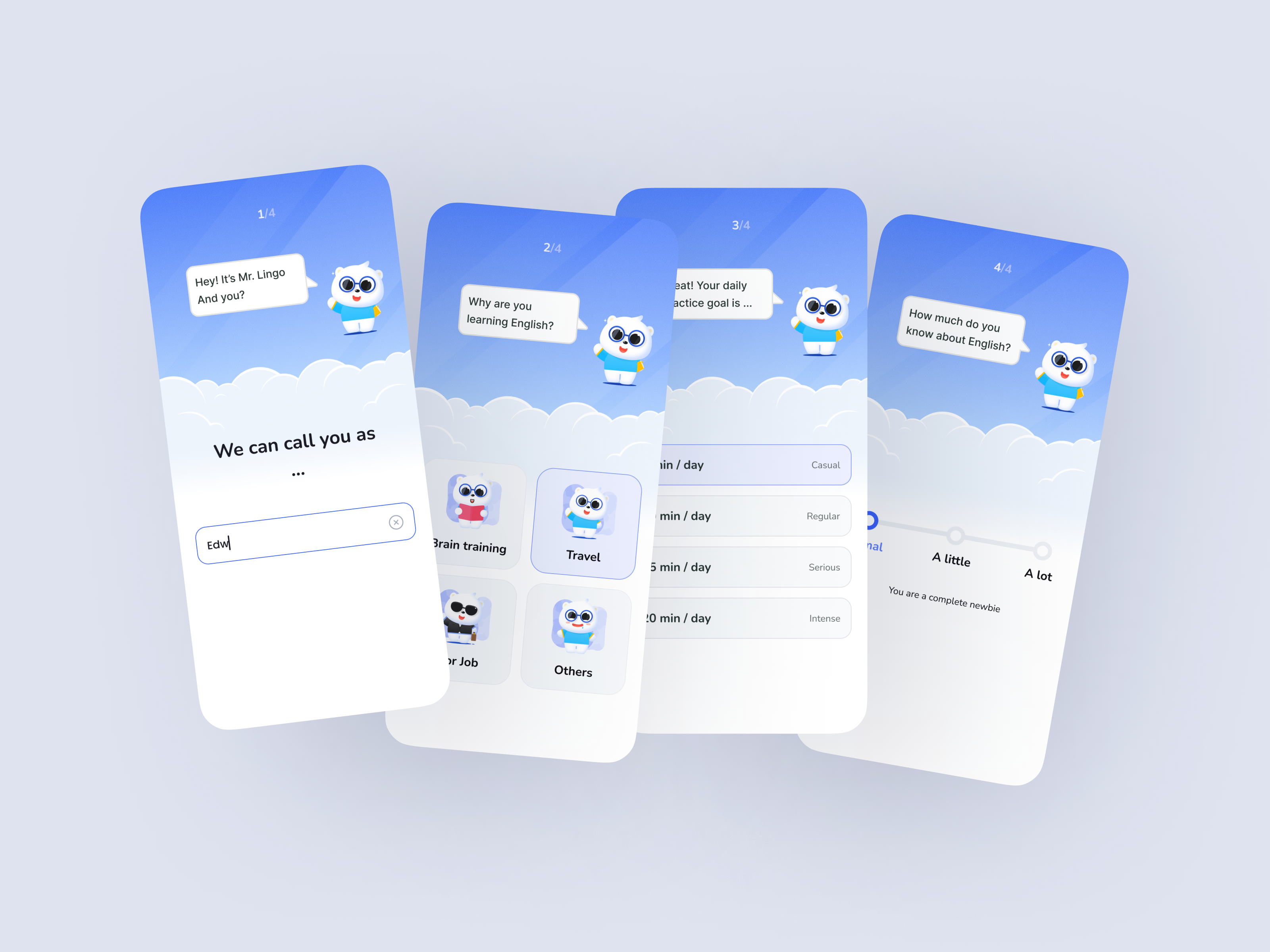
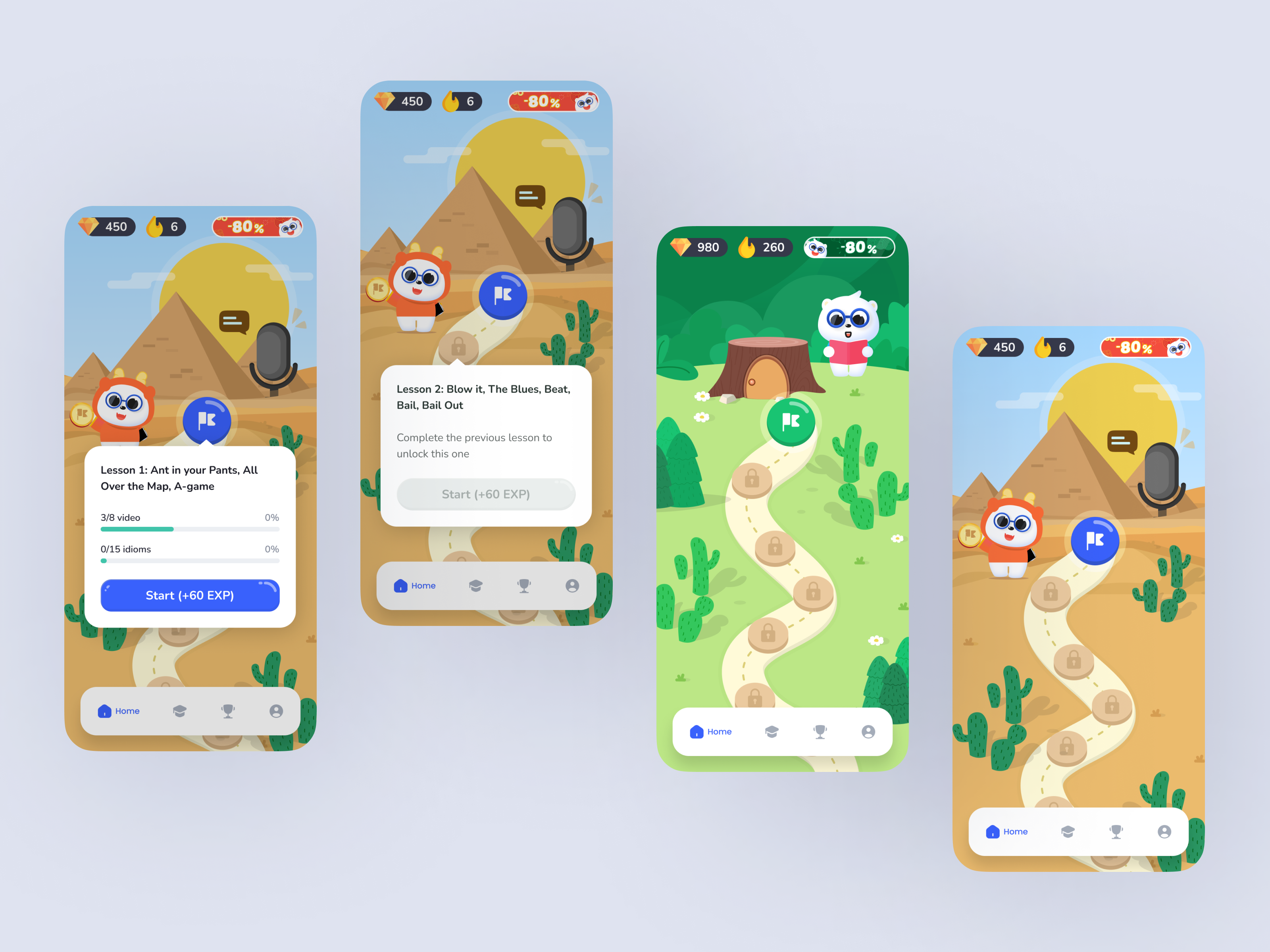
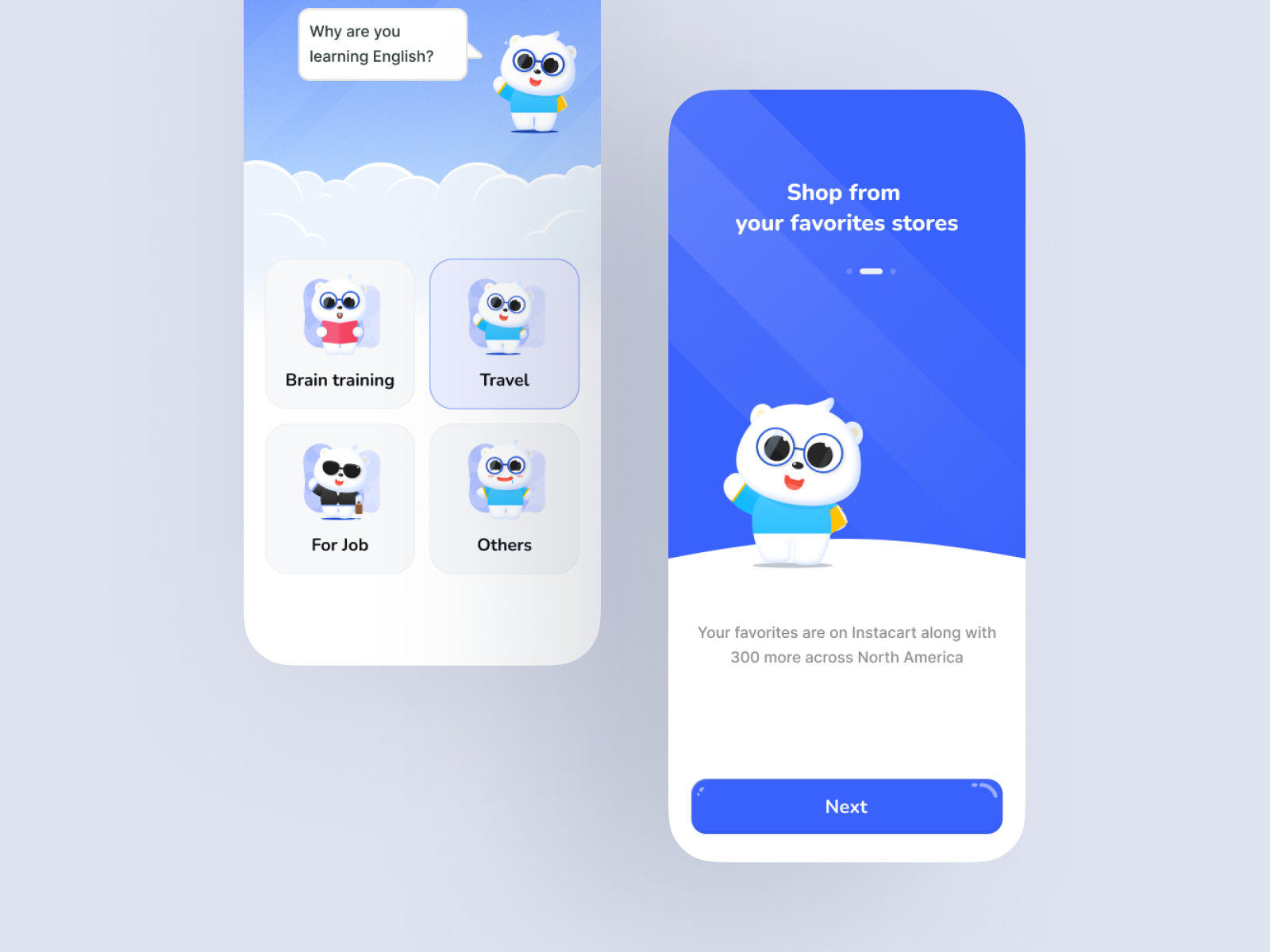
Screens & Interaction Flows
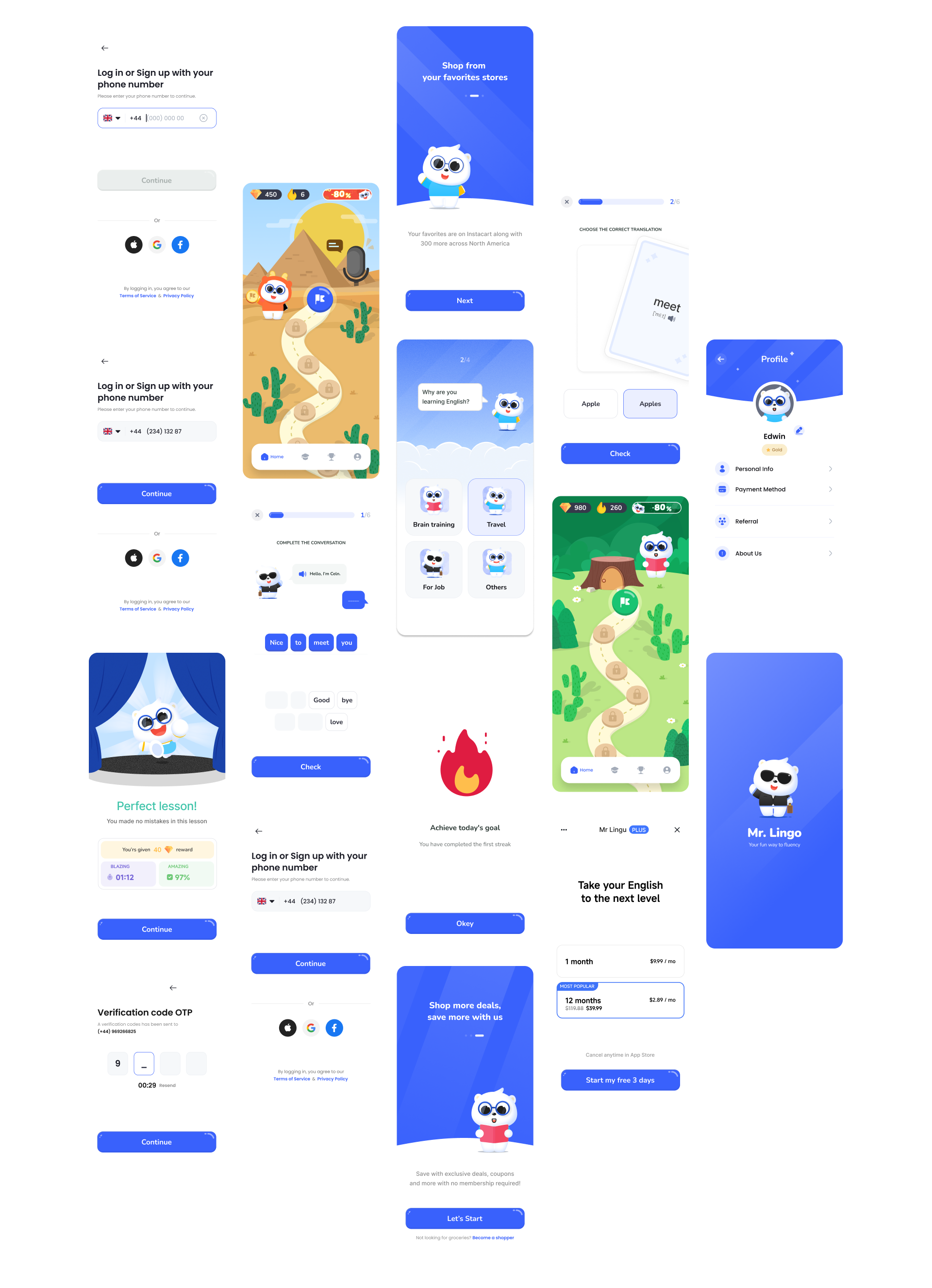
Usability Testing & Iteration
Changes:
• Replaced tabs with swipeable lessons • Enlarged CTA buttons for kids • Simplified map navigation
Outcome & What I Learned
Next Steps:
• Add social leaderboard for friendly competition • Expand mascot reactions (angry, excited, sleepy) • Launch MVP and gather onboarding data